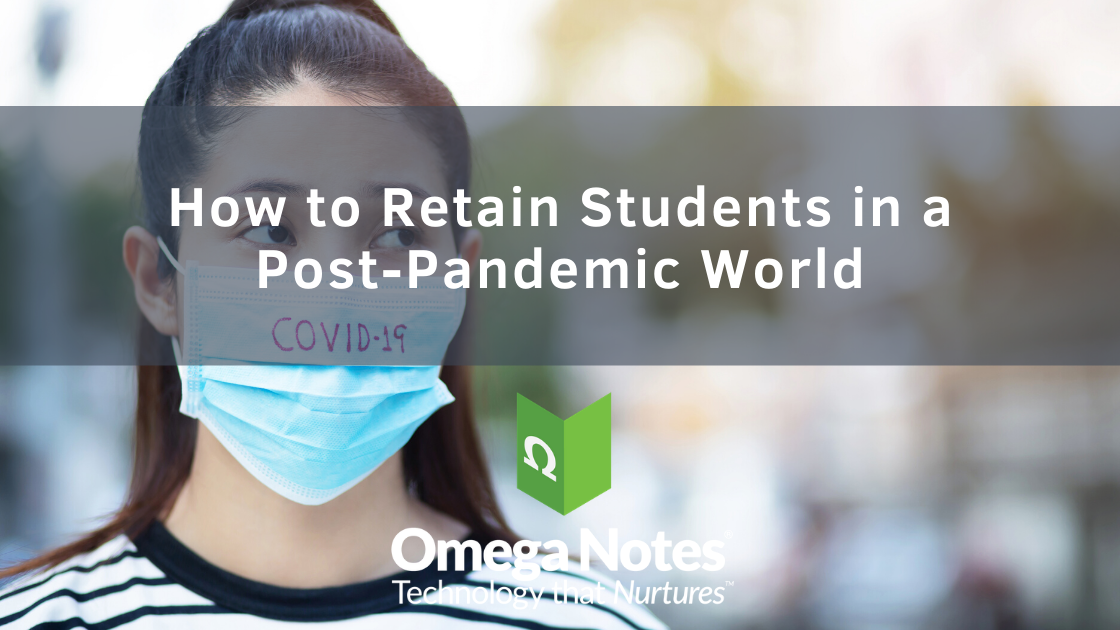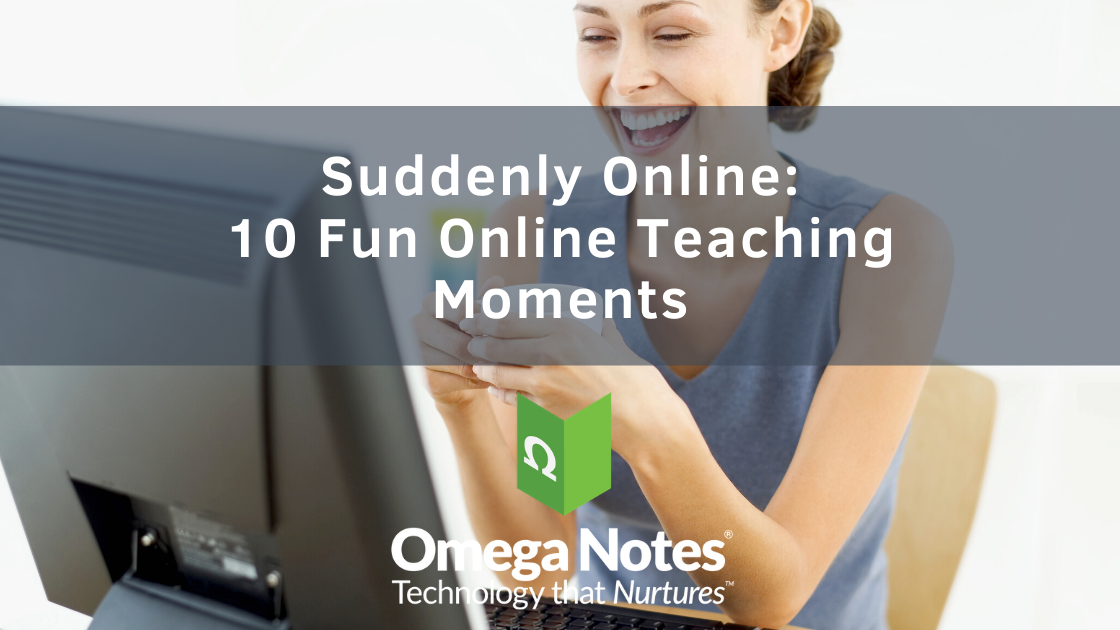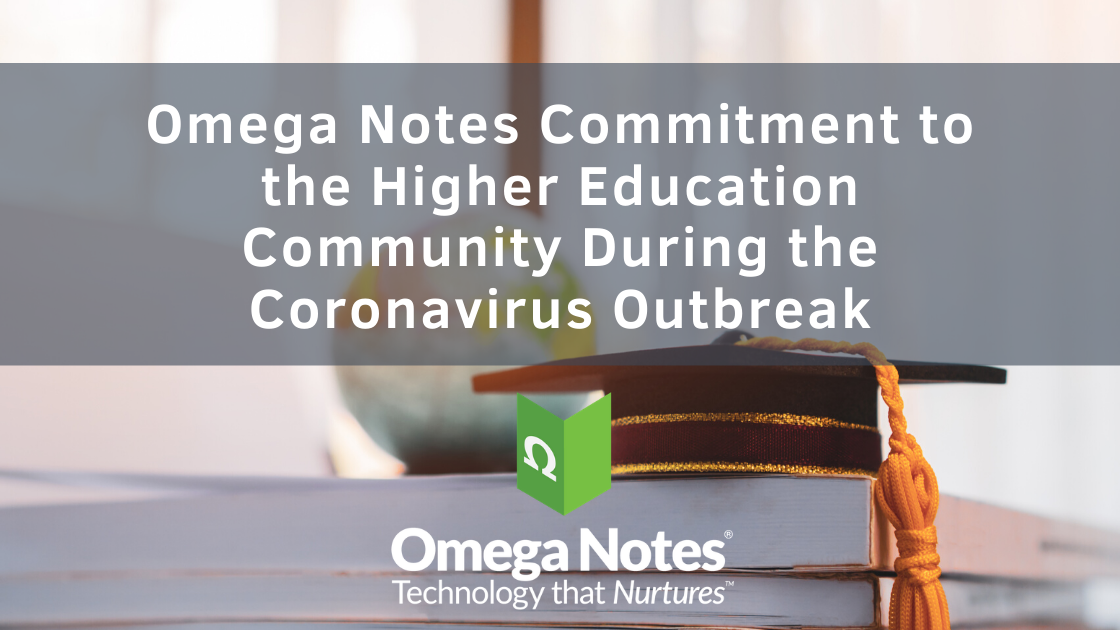The sudden pivot online forced by COVID-19 has been tough for students, faculty, and administrators. We at Omega Notes commend these efforts. Despite the challenges, higher education has pulled through and will continue to do so. These short term victories are something to be proud of. Yet, higher education has not come out unscathed, and there is an even rockier road ahead. The temporary EdTech solutions piecemealed together have brought everyone this far, but the wear is starting to show. We’ve hit a point where the virtual duct tape and super glue is starting to peel away; higher education needs a permanent technology solution as soon as possible.
Classes will undoubtedly return to campus, but that reality still has many asking, “Will higher education ever be the same again?” For some that statement causes a resounding eye roll. Some may ask themselves:
- Will higher education’s future consist of an education dystopia where all students are forced into cold tech-driven isolation against their will as professors are quickly replaced by their AI robot counterparts?
- Or will all faculty and administrators adopt new EdTech solutions and live harmoniously in a technology utopia as all of their problems are solved forever more?
Of course, neither of these futures hold merit, but it does bring to light a confounding narrative in higher education thought. Techphiles who’ve been pushing EdTech for years see this as their big opportunity to avalanche into technology while traditionalists opposed to tech-driven solutions are doubling down on their opinion that technology can create more of a burden than a solution. Fortunately, the truth lies somewhere in the middle.
The upcoming technology changes will be ever-present and we need to approach this reality quickly and strategically. Students and educators alike are returning from their battle-hardened education isolation with a newfound perspective on EdTech. Some opinions may have changed for the better, others may be more skeptical than ever. Regardless of opinions, EdTech is here to stay; and make no mistake, this is a good change. Universities and colleges will need to adapt to thrive. The industry needs to take a rational look at the options available. Now is the time to implement a permanent solution everyone can take pride in.
A Permanent Ed Tech Solution Offers a Solid Continuity of Teaching Plan
Public health officials are still very uncertain exactly when key elements of the economy are opening. Most universities have wisely decided to transition classes online for the entire duration of the Summer. Now the question on everyone’s mind is, what is going to happen in the Fall? A few universities have already come out publicly with a continuity of teaching plan that may extend through the Fall. And if the fears of the CDC are realized, we may have a resurgence of COVID-19 that could force many businesses to press the reset button on social distancing. We should not be pessimistic, but administrators would be wise to have a strategy in place. And, those institutions with a permanent, comprehensive EdTech solution, will be the ones with a competitive advantage.
The Demand for Online Education Will Increase
The unknown is what makes the COVID-19 pandemic so hard to manage as a university. What will be the ‘new normal’ once these social distancing measures are lifted? Economists speculate that entire industries will be changed permanently. Social scientists echo this sentiment and point out that the workplace and learning environment(s) of tomorrow will be more virtual than ever before. Distance learning will spike for both practical and economic reasons. Some students will come out of this with a new-found confidence in socially-guided online environments, while others will have no choice but to remain home to help support family during the projected economic downturn. No matter how you cut it, there will be a much higher demand for socially networked distance education and the associated tools after life returns to ‘normal’.
Blended Learning Will Become the New Norm
Students will return to campus with new expectations, and fortunately, faculty and administrators have a new arsenal of tools at their disposal. Blended learning was already trending in popularity before COVID-19, and soon it will become a necessity. Mind you, this necessity will be driven by far more than student expectations. Blended learning offers an opportunity to eliminate overhead while still offering a quality campus experience. Some institutions, such as Penn State University, have seen great success piloting optional online lectures of certain courses taken on campus. Done correctly, growing blended learning offerings through EdTech will reduce overhead, improve student satisfaction, and save faculty valuable time.
With a Looming Recession, Institutions Need to Stand Out
It is not an exaggeration to say that the market disruption caused by COVID-19 has never been observed before in modern history. This fact could not be more true for higher education. Recent polls indicate that 1 in 5 high school seniors have postponed or canceled their college enrollment. Just as disconcerting are the number of existing college students, estimated around 20%, that are not planning to return for the fall semester. It’s challenging to make any decisions when you’re unable to see the forest through the trees. But alas, history belongs to the bold. Those institutions who innovate during a time of uncertainty are going to be the ones who come out with a strong competitive edge.
The technology solutions in place right now have been implemented largely out of necessity; often these EdTech tools are relics of a past generation built on old technology. As with any tool, EdTech is most useful when it’s leveraged properly. The advantages of distance education have long been the convenience and affordability for institutions and students, but most have struggled to replicate the vibrant learning environment found in the highly desired on-campus learning communities. EdTech providers like Omega Notes have designed tools to address these concerns, but it’s challenging to build any distance learning community without a level of permanence to deliver a sustainable and highly functional solution. With the looming challenges coming over the horizon, it’s time to throw out the partially used rolls of tape and invest in a hammer and nails. Institutions who build permanent learning solutions now will be prepared to weather the storms ahead and leave this crisis stronger, more competitive, and more financially sound than they were before.






Leave A Comment